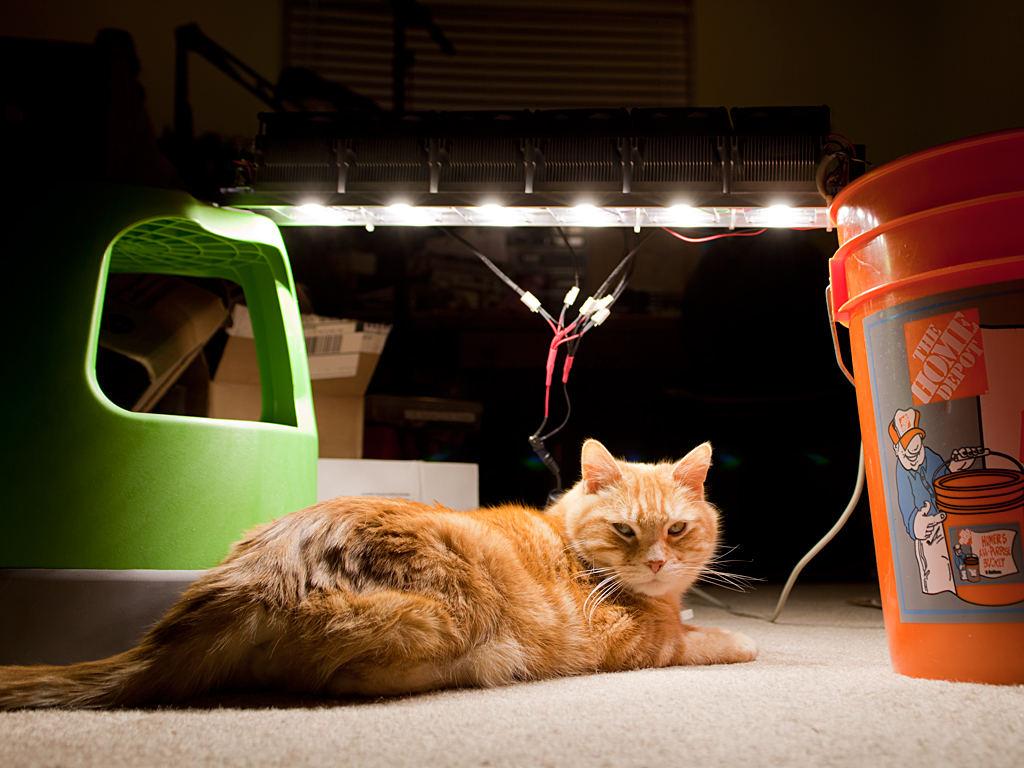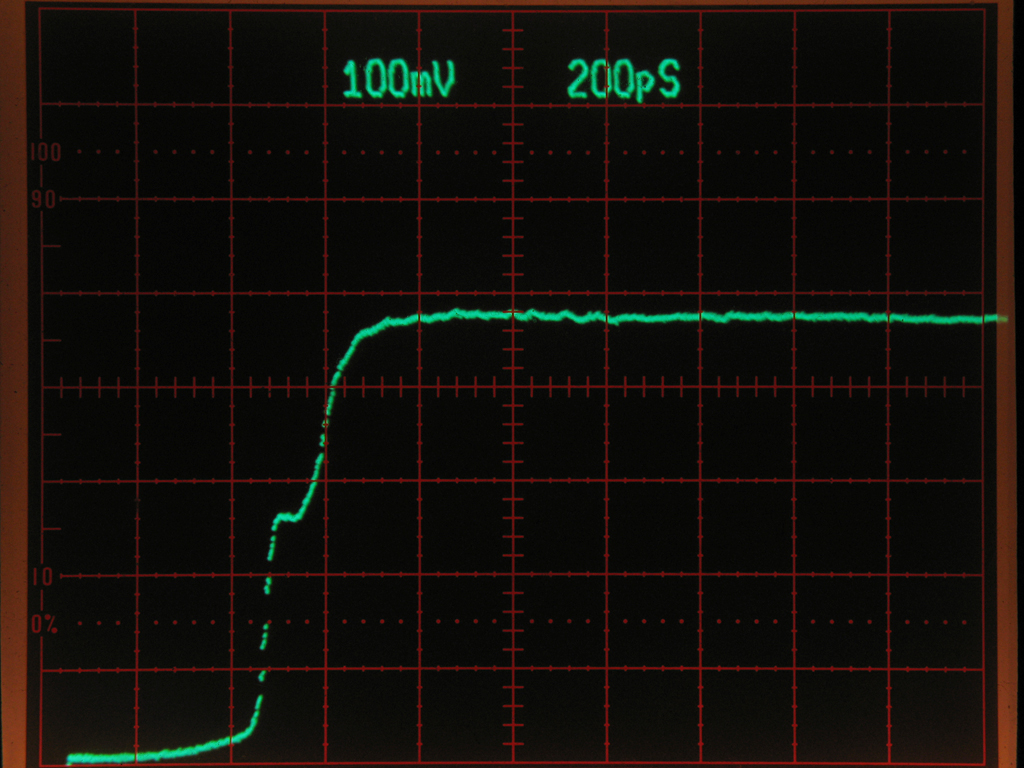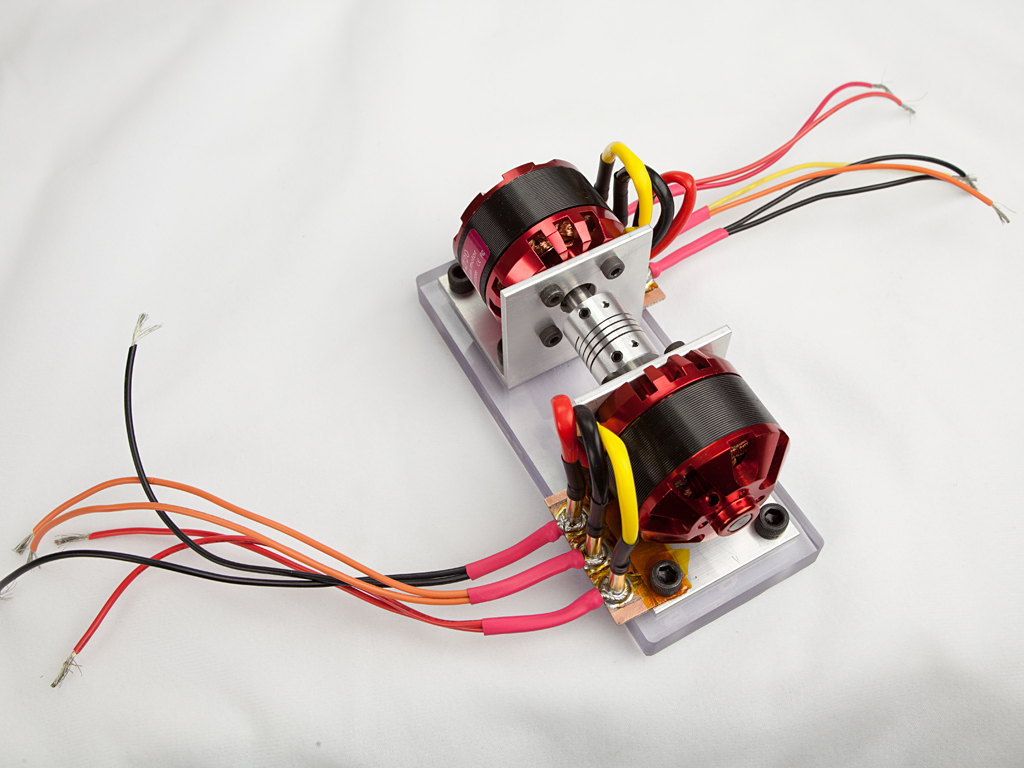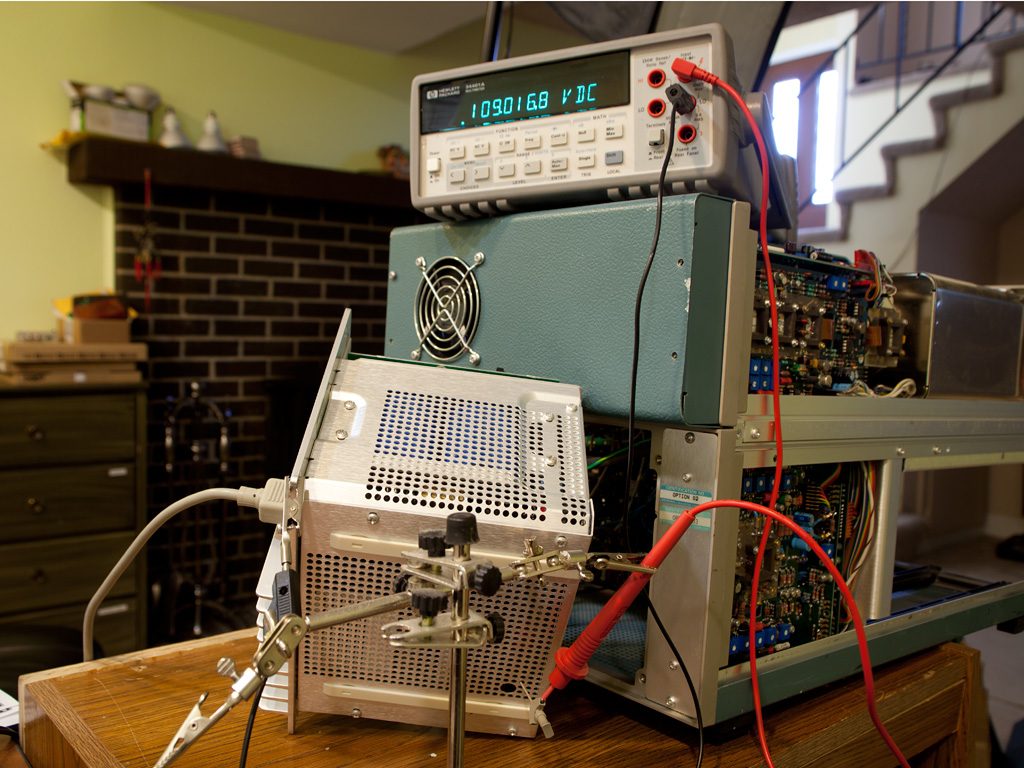 To make my growing season preparations more high-tech, I built a grow light with more than 25,000 lumens of light output, spending less than US$300. Note: this article was written in 2013, and prices have risen since then.
To make my growing season preparations more high-tech, I built a grow light with more than 25,000 lumens of light output, spending less than US$300. Note: this article was written in 2013, and prices have risen since then.
 While making some measurements today, I noticed a strange reflection in the signal generated by my Tektronix 7S12 TDR sampling plugin. At first, it looked like a bad connection at the output of the loop-through S-6 sampling head. However, after further testing, it turned out to be a more serious flaw.
While making some measurements today, I noticed a strange reflection in the signal generated by my Tektronix 7S12 TDR sampling plugin. At first, it looked like a bad connection at the output of the loop-through S-6 sampling head. However, after further testing, it turned out to be a more serious flaw.
 Two brackets, made from 2″ aluminum angle profile, hold 50-size brushless outrunner motors rated at 100 A each. The brackets are bolted to a 0.5″ polycarbonate base, and the motor shafts are connected via a flexible coupler. Contact plates are mounted next to each motor—this makes it easy to swap out a motor if one burns out. High-current wires are soldered to the female contacts. I’m using double wires to increase current-carrying capacity and to allow monitoring half the current with my 50 A current probe.
Two brackets, made from 2″ aluminum angle profile, hold 50-size brushless outrunner motors rated at 100 A each. The brackets are bolted to a 0.5″ polycarbonate base, and the motor shafts are connected via a flexible coupler. Contact plates are mounted next to each motor—this makes it easy to swap out a motor if one burns out. High-current wires are soldered to the female contacts. I’m using double wires to increase current-carrying capacity and to allow monitoring half the current with my 50 A current probe.
 In this short article, I’d like to share a trick I learned today while checking the power supply of my trusty Tektronix 7104 oscilloscope. Step A2 of the calibration section in the manual calls for measuring and adjusting the pre-regulated 109V voltage at test point
In this short article, I’d like to share a trick I learned today while checking the power supply of my trusty Tektronix 7104 oscilloscope. Step A2 of the calibration section in the manual calls for measuring and adjusting the pre-regulated 109V voltage at test point TP1326. Normally, accessing this test point requires removing the power supply cover, which takes time and exposes high voltages. The test setup shown in the title picture demonstrates how to access this test point while keeping the power supply cover in place.
 Today's electronic projects often require multiple supply voltages. For example, 5V is commonly used to power microcontrollers (MCUs), while sensors and peripheral interface controllers typically operate at 3.3V. If your circuit includes both types of components, both voltages must be provided. Usually, one voltage is derived directly from the main power source (such as a battery or wall adapter), and the second voltage is generated from the first—using either a linear LDO regulator if it is lower, or a boost converter if it is higher.
Today's electronic projects often require multiple supply voltages. For example, 5V is commonly used to power microcontrollers (MCUs), while sensors and peripheral interface controllers typically operate at 3.3V. If your circuit includes both types of components, both voltages must be provided. Usually, one voltage is derived directly from the main power source (such as a battery or wall adapter), and the second voltage is generated from the first—using either a linear LDO regulator if it is lower, or a boost converter if it is higher.
 To make my growing season preparations more high-tech, I built a grow light with more than 25,000 lumens of light output, spending less than US$300. Note: this article was written in 2013, and prices have risen since then.
To make my growing season preparations more high-tech, I built a grow light with more than 25,000 lumens of light output, spending less than US$300. Note: this article was written in 2013, and prices have risen since then.



